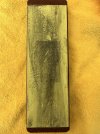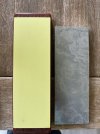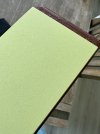- Joined
- Jun 13, 2021
- Messages
- 131
I gouged an 8k stone with a knife tip, and it appears that the stone has a small low spot shaped like an oval.
I have an Atoma 140. Do I just lap until the gouges and low spot is gone...or just leave it all be?
Do I need to follow up with an 8k Nagura stone to smooth the finish left by the Atoma 140?

I have an Atoma 140. Do I just lap until the gouges and low spot is gone...or just leave it all be?
Do I need to follow up with an 8k Nagura stone to smooth the finish left by the Atoma 140?



